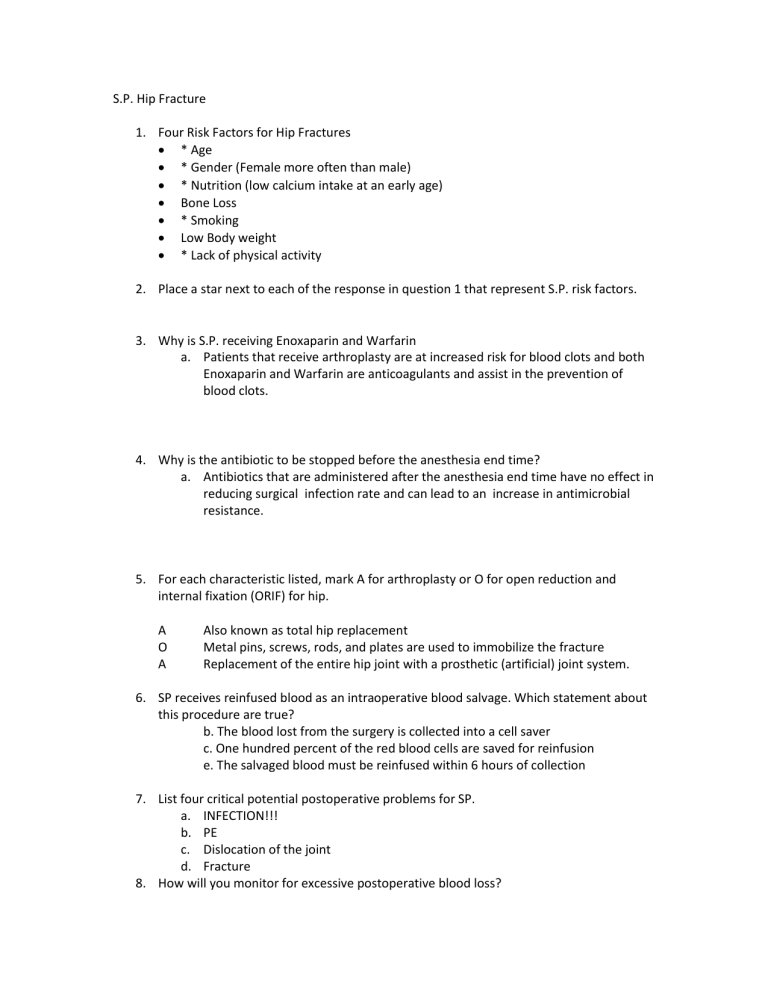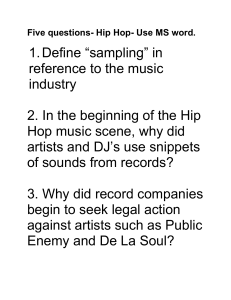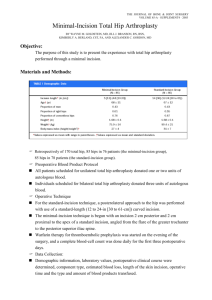
S.P. Hip Fracture 1. Four Risk Factors for Hip Fractures * Age * Gender (Female more often than male) * Nutrition (low calcium intake at an early age) Bone Loss * Smoking Low Body weight * Lack of physical activity 2. Place a star next to each of the response in question 1 that represent S.P. risk factors. 3. Why is S.P. receiving Enoxaparin and Warfarin a. Patients that receive arthroplasty are at increased risk for blood clots and both Enoxaparin and Warfarin are anticoagulants and assist in the prevention of blood clots. 4. Why is the antibiotic to be stopped before the anesthesia end time? a. Antibiotics that are administered after the anesthesia end time have no effect in reducing surgical infection rate and can lead to an increase in antimicrobial resistance. 5. For each characteristic listed, mark A for arthroplasty or O for open reduction and internal fixation (ORIF) for hip. A O A Also known as total hip replacement Metal pins, screws, rods, and plates are used to immobilize the fracture Replacement of the entire hip joint with a prosthetic (artificial) joint system. 6. SP receives reinfused blood as an intraoperative blood salvage. Which statement about this procedure are true? b. The blood lost from the surgery is collected into a cell saver c. One hundred percent of the red blood cells are saved for reinfusion e. The salvaged blood must be reinfused within 6 hours of collection 7. List four critical potential postoperative problems for SP. a. INFECTION!!! b. PE c. Dislocation of the joint d. Fracture 8. How will you monitor for excessive postoperative blood loss? a. Vital signs i. Heart Rate 1. Tachy at first ii. Blood Pressure Changes 1. Hypotension, iii. Temp 1. Hypothermia, iv. LOC 1. Decreased LOC b. I&O i. Drainage anout ii. Weight of bandage 9. According to the posterior surgical approach, there are two main goals for maintain proper alignment of SP operative leg. What are they, and how are they achieved? a. Hip abduction wedge pillow between legs AT ALL TIMES b. PT 10. Postoperative wound infection is a concern for SP. Describe what you would do to monitor her for a wound infection. a. Vital signs i. Tachycardia, ii. Hyperthermia b. Drainage i. Color ii. Smell c. CBC. i. WBC Increase ii. Inflammation 1. C-reactive protein 2. Erythrocyte sedimentation rate (ESR) 11. Taking SP RA into consideration, what is the reason for the PT and OT consulations? a. Reduce chance of dislocation, contractures, or stiffening from happening. b. Strengthening the bones, joints, and muscles c. Coach on heat and ice therapy for the inflamed joints. d. Assist/increase S.P. independence to continue performing her ADLs. 12. What predisposing factors, identified in SP’s medical history, increase her risk for respiratory complications? a. CAD i. Bypass 9 months ago HX of narrowed/stiff arteries b. 50 pack year smoking history c. Family HX: mother dying at age 79 from heart failure d. SPO2 94% on 2L oxygen by nasal cannula 13. What predisposing factors, identified in SP medical history, place her at risk for infection, bleeding and anemia? a. G.E.R.D. b. Prescription for Prednisone medication c. R.A. 14. Briefly discuss SP nutritional needs? Why is she receiving an iron supplement? a. Nutrition is needed to fight infection and to also help with healing, high protein, vegetables, fruits and whole grain b. RA is often associated with, not only chronic inflammation, but also anemia.. 15. What factors need to be taken into consideration by the patient, family, and case manager when choosing a rehabilitation facility? a. Cost i. Self Pay ii. Insurance iii. Medicare/Medicaide b. Proximity i. Family more likely to assist/participate if near by c. PT/OT i. Is there trained staff and experience with Hips d. Is there transportation to the facility? e. Can the facility handle her other history elements?





